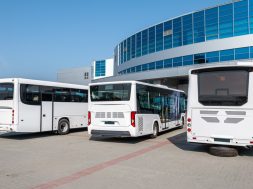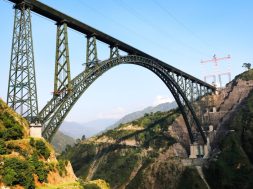Design remains the backbone for successful project execution. With major road developments projects coming up road design will have an important role to play.
Design of roads and bridges plays a vital role in the utilisation and effectiveness of any road or bridge. Often the design process in neglected or very little attention is given to it due to constraints arising during the projects. With India concentrating to build its road network stronger, designing of roads and bridges will play a major role in defining the successful completion of roads and bridges.
Role of design in roads & bridgesThe role of design is extremely important in every project and not just roads and bridges. As for roads and bridges, proper design is critical as it helps highway engineering professionals create data-rich models and engineer roadways. Design and planning helps streamline roadway geometry layout, including intersection design, with powerful, rules-based toolsets and analysis capabilities to help uncover potential impacts in the preliminary design phase.
In the Indian context, public bodies such as NHAI are using 3D design technology to expedite construction works including for NHDP projects. There are several reasons why latest design and technology tools should be opted instead of traditional methods. They help in greatly reducing construction costs, increasing construction speed and efficiency, minimal to no construction waste, reducing financing costs and, increased sustainability of the roads and bridges. “Even after construction on a project is complete, design stills play a vital role for the sustenance of the project. Latest technology can be used for the project’s ongoing operations and maintenance, as well as for emergency and property management which is quite critical,” says Anand Sirohi, Head, ENI, Autodesk India.
When asked about the need for good design for roads and bridges Bhubaneswar Koner, Senior Consultant, CETEST Engineering said, “Highway owners and users are demanding more from roadways and bridges. They want infrastructure to be built quickly, at low cost, with minimal impact on the environment, safe with low long-term maintenance. They also want long life and aesthetics.” Achieving these competing requirements can be difficult, but new technologies are providing solutions. Highways should be designed to provide optimum efficiency in traffic operations with maximum safety and stability at reasonable cost for full design life.
“It is very important to plan and design the geometric features of roads and bridges in the initial alignment itself taking into consideration and future growth of traffic flow and possibility of the road and bridge being upgraded to a higher category or higher design speed,” adds Mr Koner.
Advanced technologiesPerformance of roads and bridges is directly linked with quality of road construction and techniques which have been continuously upgrading and use of alternate materials and equipment has been advocated for all types of roads and bridges. Selection of materials and methodology, source of materials, construction techniques, machineries and T&P are the main factors.
One key method involves segmenting girders into smaller units that are fabricated offsite, transported to the location, and quickly erected. This helps standardise components and cut fabrication costs. Segmental construction combines the capability to splice girders together while cantilevering them over the piers to extend span lengths. This minimises substructure needs and reduces material and erection costs while lessening the environmental impact. Concrete can compete with steel for long-span applications. The girder launcher offers a solution for challenging multi-span structures. It pushes girders into place from above the previously constructed span, eliminating the need for false work or crane positioning that would impact the environment below. It’s especially useful for wetlands and congested urban areas.
“Many states are opening their bidding processes to allow design/build approaches. This procedure lets designers and contractors team up to propose design concepts, taking advantage of their expertise in specialised designs or materials,” says Mr Koner. He adds, “Some states are slower to embrace this, because they are concerned that they don’t have as much control or aren’t as certain they will receive the design that they want indeed, in some states, design/build options aren’t allowed—but more are using it. At one point none of them used it, so the trend is growing.” New technologies are enhancing pavement options as well. One technology is roller-compacted concrete (RCC), which uses conventional concrete materials with a drier mix compacted by vibratory rollers. It requires no forms, joints, finishing, or steel reinforcement, and can be used for heavy-duty applications; it requires minimal maintenance.
“Precast concrete pavement panels are getting a closer look. The panels are pre stressed in one direction, delivered to the site and set into place, then post-tensioned in the opposite direction to create a stable, immediately available driving surface,” opines Mr Koner. Also growing in use is high-performance concrete (HPC), which differs from high-strength concrete because it focuses on durability and low permeability, although high strength often is part of the package. HPC adds durability to bridge components, especially decks.
Autodesk is one of the pioneers of 3D Design technology and Building Information Modelling (BIM) that can help improve collaboration, efficiency and performance in the planning and design phase, during construction of roads and highways and for ongoing operational management which is extremely critical. “Transportation engineering teams are facing increased pressure to do the job faster and at a lower cost while delivering high-quality projects,” comments Mr Sirohi.
Autodesk provides innovative ways to plan, design, build, and manage roads and highways, and is changing the way the industry tackles the challenges related to improving the roadways that are vital to commerce. He further adds, “BIM which was once considered just for buildings, is now delivering tremendous gains in efficiency and quality for the transportation industry. The principles of BIM apply to everything in the built environment—including roads and highways. BIM, an intelligent model based process, can provide the necessary insight to create and manage projects faster and more economically.”
In addition to BIM, Autodesk has software like Roadway Design for InfraWorks 360 which is a tool heavily used by designers, planners and engineers alike for projects to explore preliminary design options and optimise project performance. It helps highway engineering professionals create data-rich models and engineer roadways in context. Streamline roadway geometry layout, including intersection design, with powerful, rules-based toolsets and analysis capabilities to help uncover potential impacts in the preliminary design phase.
India’s roads aheadThe road ministry was allocated funding of ` 42,913 crore in the FY16 budget. The government has already announced an ambitious project aimed at making a vast improvement to the country’s roads upgrading existing ones and building new links to connect remote areas. It’s also aiming to make a key difference in the efficiency of surface transport by building 350 railway bridges and level crossings. The government is also looking at PPP model for such projects.
The Golden Quadrilateral is a highway network in India connecting Delhi, Mumbai, Kolkata and Chennai is a shining example of a brilliantly designed and executed road project. The Mumbai-Pune expressway and Yamuna Expressway are few of the many excellent road projects in India. The Bandra-Worli Sea Link in Mumbai is an engineering feat that couldn’t have been possible without using state of the art design and technology. The Kashmir Rail Link is supposed to be completed by 2020 which will also have a railway bridge of 359-metre high and a span of 467-metre making it the highest railway bridge in the world. These are a few of the road and bridge projects that have been designed with utmost precision and brilliant planning and execution.
“There exists challenge’s around the maintenance of roads due to insufficient implementation of design technology and also the presence of red tape that tends to slow down any possible efforts of building world class roads. In India, only 30–40 per cent of the revenue from road transport is invested back into road development,” remarks Mr Sirohi. In contrast, countries like the US, Switzerland and Japan use the entire revenue for road development. They work without any management board; lack specific governance mechanism and transparency in decision-making. While Mr Koner feels, ”In India, there is the problem in the mind-set in set-up. There is lack in application of value engineering too.”
State-of-the-art solutionsToday’s transportation engineering professionals face the challenge of producing road and highway designs that can serve future needs while meeting today’s demands for cost effectiveness, community engagement, and design efficiency.
Autodesk’s Road and Highway product portfolio helps road and highway professionals leverage the power of building information modelling (BIM). This suite of products, including AutoCAD, Civil 3D, Autodesk, Navisworks, and AutoCAD, Map 3D, can help one to explore design options more quickly and integrate information from a variety of sources more easily, communicate design goals and impacts to stakeholders and the community more effectively, improve and optimise designs using powerful roadway design tools, modelling, and analysis, use BIM to help reduce errors and manage changes more efficiently, improve future decisions with as-built model information for geospatial databases and asset management systems. ____________________________________Transportation engineering teams are facing increased pressure to do the job faster and at a lower cost while delivering high-quality projects.
Anand Sirohi, Head ENI, Autodesk India________________________________________
In India, there is the problem in the mind-set in set-up. There is lack in application of value engineering too.
Bhubaneswar Koner, Sr. Consultant, CETEST Engineering
Cookie Consent
We use cookies to personalize your experience. By continuing to visit this website you agree to our Terms & Conditions, Privacy Policy and Cookie Policy.









